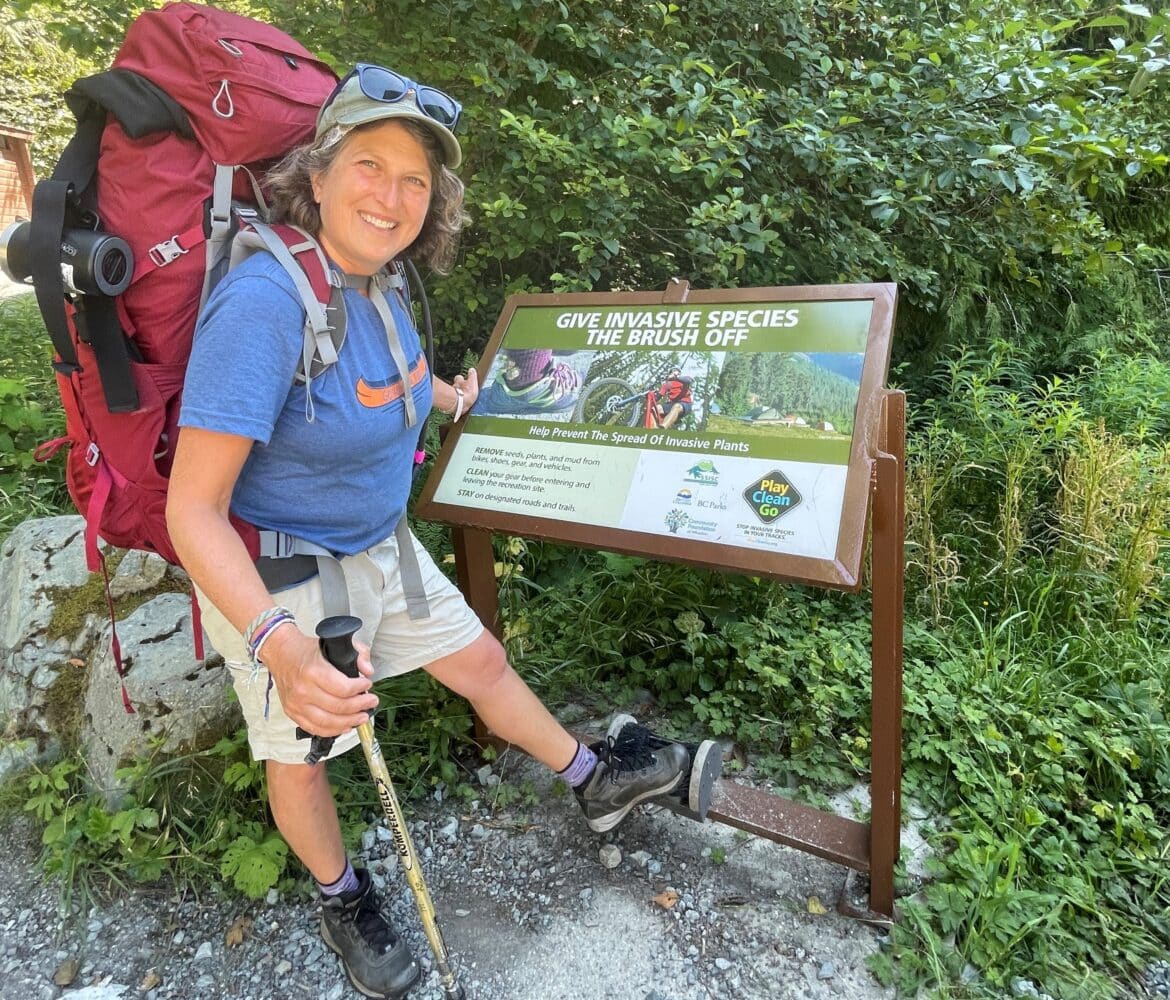By Lisa Houle | May 29, 2024
Over the past three weeks, we’ve shared how to identify, report, and remove invasive species. The last effective tool in our collective toolbox is invasive species prevention – the most economical and desirable approach to invasive species management.
From emerald ash borer detected in B.C. for the first time, to new proactive measures to stop the further spread of whirling disease, it’s been a busy Invasive Species Action Month.
Invasive species are sneaky, hitching a ride in the most unlikely, unexpected ways – on your bike tires, your pet’s fur, in your firewood, and even in the last few drops of water in your canoe. Whether you’re a hiker, biker, paddleboarder, angler, pet owner, or general outdoor adventurer, we need your help to prevent invasive species from spreading.
As efforts increase to ensure invasive mussels do not make their way into B.C.’s waters, there are simple things we can all do every day to ensure aquatic invasives like these don’t find their way here. Keep it clean after spending time in the water.
“We all want to enjoy the beaches and waters that we play in, and the best way to keep them healthy is to Clean Drain Dry. That pertains to your watercraft, trailers, gear – anything that’s been in contact with the water. Wash down your items on dry land, pull boat plugs before travelling, and allow drying time before moving to the next waterbody,” said Nick Wong, Science and Research Manager at ISCBC. “You’re going to hear this message a lot because there is a lot at stake, and we need to make sure everyone knows – the simple action of Clean Drain Dry makes a big difference in reducing invasive species spread.”
There are equally important practices for land lovers too. More inclined to play amongst the trees and the trails? Make sure you leave the invasive hitchhikers behind.
“To ensure invasive-free fun on your outdoor adventures, remember to PlayCleanGo. Stay on marked trails and before you leave an area use a boot brush to remove mud and debris from your boots, bike tires, and anything else that touched the forest floor,” said Nick. “Don’t forget to give your clothing, backpacks and other items a shake. Brush off your pet too before leaving the area, as fur is a magnet for invasive plants and seeds.”

And when conditions allow for outdoor fires, make sure to keep your firewood local.
“Some wood-infesting invasive species can travel long distances in firewood, that’s why it is best to Buy Local Burn Local. Burn wood from the immediate area only and when you have local firewood left over, leave it for the next person to enjoy. Do not transport it,” said Nick. “The cost of a few pieces of firewood is negligible compared to the cost of managing an invasive species infestation. When we Buy Local Burn Local, we help to protect the forests we all love.”
As the end of Invasive Species Action Month 2024 nears, we hope you’ve found the simple practices we’ve shared to be both informative and easy to incorporate into your everyday routines.
“We’re asking everyone to play their part when it comes to safeguarding B.C.’s beautiful outdoors,” said Nick. “The smallest actions can make the biggest impact in stopping the spread of invasive species. Thank you for your help.”
Every year the Province of BC proclaims May ‘Invasive Species Action Month’ (ISAM), recognizing the impact of invasive species on B.C.’s environment, economy, society, and human health. Thank you for joining us on an engaging and informative journey to learn how to identify, report, and manage invasive species, and get to know some of the easy ways we can all prevent their spread.
Lisa is a Communications and Outreach Coordinator at ISCBC. She values a diverse environment and connecting with others about environmental protection. In her spare time Lisa enjoys spending time at the ocean and beach combing for sea glass. You can reach Lisa at lhoule@bcinvasives.ca
Share


















